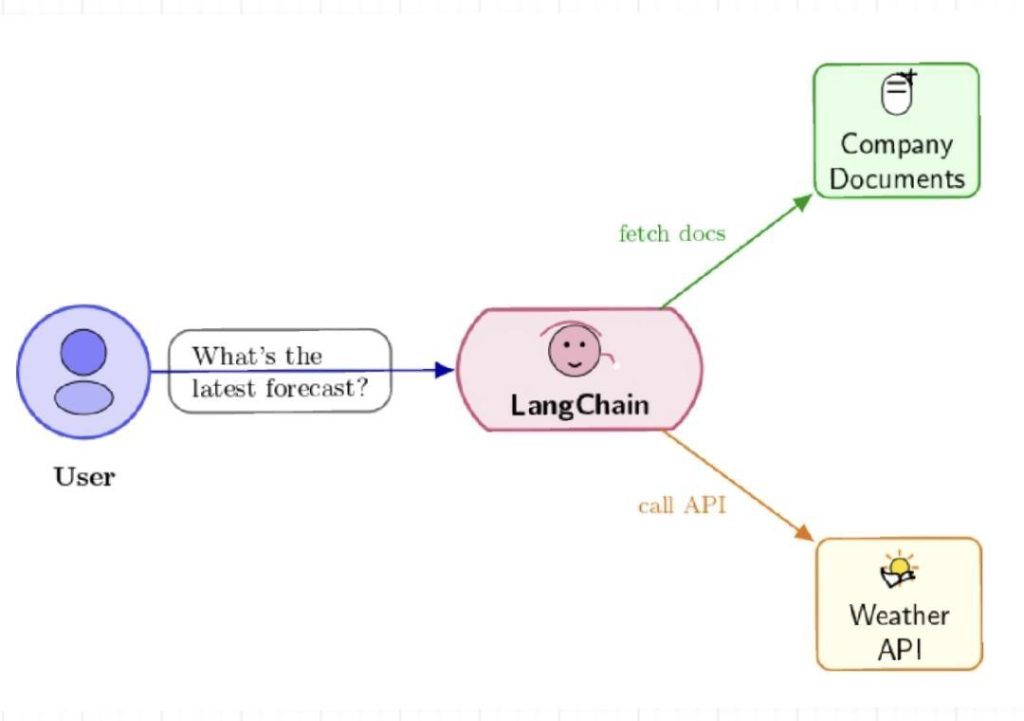
Why is LangChain a Game-Changer for AI Workflows?
The rise of large language models (LLMs) has revolutionized the way we interact with artificial intelligence. These models have enabled machines to understand and generate human-like language, opening up a wide range of possibilities for applications in customer service, content creation, and more. However, LLMs have traditionally been limited in their ability to interact with the outside world, relying on pre-programmed responses and static data. This has made them less dynamic and less useful in real-world tasks.
Enter LangChain, a groundbreaking framework that changes the game for AI workflows. LangChain enables LLMs to interact with external tools and systems, such as APIs, databases, and file systems, allowing them to fetch real-time data, take actions, and retain memory across conversations. This means that LLMs can now reason, act, and adapt in ways that were previously impossible.
What is LangChain?
LangChain is an open-source framework developed by a team of researchers and engineers at Meta AI. It’s designed to be a modular, extensible framework that can be used with a wide range of LLMs and tools. At its core, LangChain provides a set of APIs and tools that allow LLMs to interact with external systems, retrieve data, and perform actions.
One of the key features of LangChain is its ability to enable LLMs to retain memory across conversations. This means that an LLM can recall information from previous conversations and use it to inform its responses in future conversations. This is a major breakthrough, as it allows LLMs to build a kind of “memory” that can be used to inform its actions and decisions.
How Does LangChain Work?
LangChain works by providing a set of APIs and tools that allow LLMs to interact with external systems. These APIs can be used to retrieve data from databases, file systems, and other sources, and to perform actions such as sending emails or making API calls.
LangChain also provides a range of tools and libraries that can be used to extend its functionality. For example, LangChain includes a library for natural language processing (NLP) that can be used to analyze and generate text. It also includes a library for machine learning (ML) that can be used to train and deploy machine learning models.
What are the Benefits of LangChain?
So, what are the benefits of LangChain? There are several:
- Improved Responsiveness: LangChain enables LLMs to respond to user inputs in real-time, rather than relying on pre-programmed responses.
- Increased Flexibility: LangChain allows LLMs to interact with a wide range of external systems and tools, making them more versatile and useful in real-world tasks.
- Enhanced Memory and Reasoning: LangChain enables LLMs to retain memory across conversations, allowing them to reason and adapt in ways that were previously impossible.
- Improved Accuracy: LangChain allows LLMs to retrieve real-time data and use it to inform their responses, making them more accurate and reliable.
Real-World Applications
So, what are some real-world applications of LangChain? There are several:
- Customer Service: LangChain can be used to build AI-powered customer service agents that can respond to user queries in real-time.
- Content Generation: LangChain can be used to build AI-powered content generation tools that can generate high-quality content in real-time.
- Data Analysis: LangChain can be used to build AI-powered data analysis tools that can retrieve and analyze large datasets in real-time.
- Automated Reporting: LangChain can be used to build AI-powered reporting tools that can generate reports in real-time.
Conclusion
LangChain is a game-changer for AI workflows. It enables LLMs to interact with external systems, retrieve real-time data, and retain memory across conversations. This means that LLMs can now reason, act, and adapt in ways that were previously impossible. Whether you’re building a customer service agent, a content generation tool, or a data analysis system, LangChain is an essential tool that can help you get the job done.






